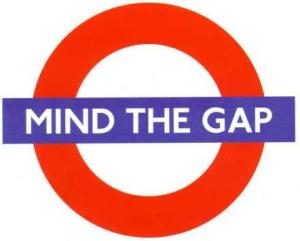Bridging the Great Divide
Yesterday, a key legislative committee recommended that the incoming governor dramatically reduce state investments, limit state borrowing, and increase transparency of how the state estimates future revenue. The reduction of state investments could have serious impacts on the people and communities of Maryland. The Governor-elect should work with his team to craft a budget that continues to support Maryland’s residents and their values.
reduce state investments, limit state borrowing, and increase transparency of how the state estimates future revenue. The reduction of state investments could have serious impacts on the people and communities of Maryland. The Governor-elect should work with his team to craft a budget that continues to support Maryland’s residents and their values.
The recommendations of Maryland’s Spending Affordability Committee – responsible for advising the Governor and General Assembly on spending levels for the next state budget – are not binding, but the Governor and the General Assembly usually take action in line with its guidance.
Spending ≠ Revenue
The committee unanimously passed a recommendation that the Governor reduce state spending by $350 million in Fiscal Year 2016 in order to cut the expected gap between spending and revenue by in half. This recommendation came on the heels of Monday’s revised revenue projections by the Board of Revenue Estimates, which were lowered by $147.9 million for 2016.
The committee leaves it to Governor-elect Hogan to decide where to make cuts to investments. Although there has been talk about decreasing spending, much of Maryland’s budget (about 80 percent) is legally required spending in things like education. For example, the per student formula for funding schools require an increase in spending as school enrollment increases.
As Warren Deschenaux, Director of the legislature’s Office of Policy Analysis noted, the other 20 percent of the budget isn’t enough to close the shortfall. Either changes must be made to legally-required spending, or some revenues must be increased. Read our Revenue Options for Maryland brief for more information.
A slower than predicted recovery is largely to blame for the lower revenue projections. In addition to the recession, the sequestration by the federal government hurt Maryland’s job growth. Employment grew by less than 1% in 2013 and wages and salary income grew by only 1.5 percent, which was less than the national trend. Although revenues have increased every year, they are growing slower than state costs.
Borrowing Limited
The committee also recommended that general obligation (GO) bonds, which are used to finance state public works, be limited to their current level at $1.095 billion. This protects the state’s AAA bond rating by preventing the debt service payments from exceeding the state self-imposed limit of 8 percent of state revenue. This decision was more conservative than had been recommended by the Capital Debt Affordability Committee (CDAC).
Transparency for the Numbers
In a move to increase transparency around the revenue estimation process, the committee required that the Comptroller report to the Senate Budget and Taxation, House Ways and Means, and House Appropriations committees before February 1, 2015 to explain the process for forecasting revenues, as well as any barriers to tax collection. This will provide lawmakers and the state with a better understanding of where the revenue estimates come from and on what trends are they making predictions. This recommendation is a step forward for Maryland because transparency in this process could unearth resource, legal, or operational barriers, and offer a chance for the legislature to remedy them.
Governor-elect Hogan is set to release his budget on January 23, 2015.
